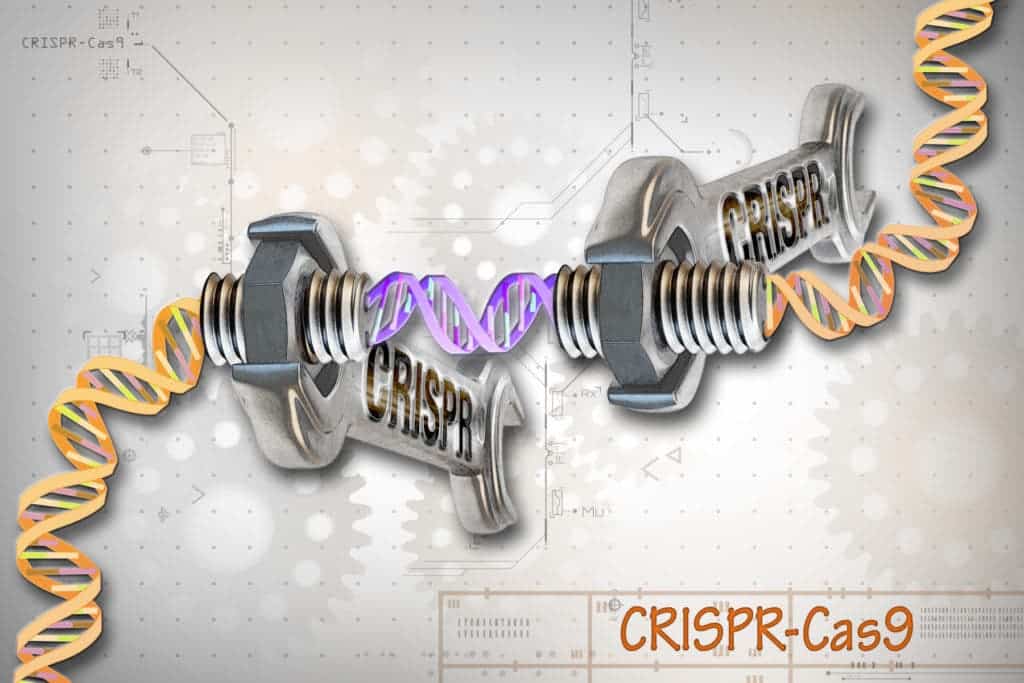Until recently, gene editing used to be relegated to science fiction novels and movies. The idea of being able to edit our genetic code or the genetics of other creatures was something that was totally out of reach — until CRISPR changed all that.

CRISPR– short for “clustered regularly interspaced short palindromic repeats” — was first observed more than three decades ago, but wasn’t patented until 2014. But what does Crispr do and how is it changing both our ecosystems and our medical systems?
What Is CRISPR?
CRISPR, in layman’s terms, is an editing tool for DNA. It uses the natural defense mechanisms of some single-celled organisms to cut and paste, so to speak, sections of DNA. This allows the DNA to be manipulated and edited.
The CRISPR process was first described back in 1985, but it wasn’t demonstrated as a viable tool for gene editing until 2007, when a food company used it to modify the streptococcus thermophilus bacteria that is commonly found in dairy products. By utilizing CRISPR, these researchers were able to modify how the bacteria reacted to a virus attack, improving overall bacterial immunity.
CRISPR Applications
Other than the bacterial modification we’ve already mentioned, what has Crispr been used for and what could it help accomplish in the future?
- Cancer treatment — Just this year, scientists showed in pre-clinical settings that CRISPR can be used to modify the DNA in cancer cells, effectively killing the cells and shrinking cancerous growths.
- Huntington’s disease — This currently incurable genetic condition is almost always fatal in humans. Crispr can be used to edit out the gene that causes it in mice, reversing the condition. It is expected to be applied to human trials in the not-too-distant future.
- Biofuel — Outside of the medical industry, CRISPR has been used to modify algae that produce biofuel. The modified algae produces twice as much fuel as its unmodified counterpart.
- Data storage — CRISPR has been used to encode binary data (the same sort of information that is stored on your computer hard drive) directly into DNA. This new form of storage could potentially last millions of years, which is orders of magnitude longer than current data storage methods.
This is just a small sample of the advances that have been made using the CRISPR DNA editing method — most of which have been completed in the past few years. What could this be used for in the future?
- Pest control — Specifically, pests like mosquitoes and ticks that can spread disease. Crispr can theoretically be used to modify these pests in a laboratory setting. Once released into the wild, the modified pests can either spread bacteria that prevents pests from spreading disease or cause the local pest population to die out. In mosquitoes, CRISPR has been used in the lab to create sterile male mosquitoes that won’t bite and can’t breed.
- In vitro modifications — This is probably the most ethically questionable application for CRISPR, but it could potentially be used to edit the human genome to cause positive traits to manifest or to remove the genes that cause specific diseases.
Potential Impacts
Utilizing CRISPR on things like mosquitoes might seem like a small enough thing, but we have to keep one thing in mind: everything in an ecosystem, from the smallest microorganism to the largest apex predator, has a significance; the effects of such actions could be far-reaching and difficult to anticipate. We might think eliminating a small pest like a tick or mosquito might not have any impact on this ecosystem, but when it comes right down to it, we don’t know enough about these ecosystems to truly and accurately judge what will happen if we artificially remove a species from it.
Releasing genetically modified mosquitoes designed to eliminate the mosquito population could have no effect at all — it’s entirely possible they will simply be bred out of the population and, as Jurassic Park’s Dr. Ian Malcolm so aptly put it, life will “find a way.” Unfortunately, in the wild, these genetically modified pests could also mutate and become something completely different — something that could potentially turn an entire ecosystem on its head.
Now, this is a worst-case scenario. But we simply don’t know enough about the impact of these things to start tampering with them on a large scale yet.
CRISPR may be one of the most exciting advances in genetic research in recent years, but we should still be careful with how we use it. We don’t understand the impact of genetic manipulation well enough yet to forge ahead carelessly. Once we’ve studied the impact, though, this could upend the way we interact with the world around us and change medicine as we know it for the better.


